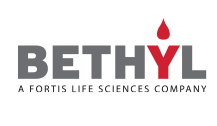-
Rabbit anti-DOCK10 Antibody
Bethyl Laboratories Catalog # A301-305A A301-305A-T
 ValidatedDocuments (5) Citations ()
ValidatedDocuments (5) Citations ()Rabbit anti-DOCK10 Antibody
Validation Performed
All Bethyl Laboratories® antibodies are validated to meet our strict performance standards.
Target: DOCK10
Reactivity: Human
Applications:
Host: Rabbit
Clonality: Polyclonal
Conjugate:
Purity:
For ordering information, see our International Distributors
Product has been discontinued
-
Rabbit anti-UBAC1 Antibody
Bethyl Laboratories Catalog # A304-121A A304-121A-T
 ValidatedDocuments (5)
ValidatedDocuments (5)Rabbit anti-UBAC1 Antibody
Validation Performed
All Bethyl Laboratories® antibodies are validated to meet our strict performance standards.
Target: UBAC1
Reactivity: Human, Mouse
Applications:
Host: Rabbit
Clonality: Polyclonal
Conjugate:
Purity:
For ordering information, see our International Distributors
Product has been discontinued
-
Rabbit anti-PSMD9 Antibody
Bethyl Laboratories Catalog # A304-979A A304-979A-T
 ValidatedDocuments (3)
ValidatedDocuments (3)Rabbit anti-PSMD9 Antibody
Validation Performed
All Bethyl Laboratories® antibodies are validated to meet our strict performance standards.
Target: PSMD9
Reactivity: Human, Mouse
Applications:
Host: Rabbit
Clonality: Polyclonal
Conjugate:
Purity:
For ordering information, see our International Distributors
Product has been discontinued
-
Rabbit anti-p300 Antibody
Bethyl Laboratories Catalog # A300-359A A300-359A-T
 ValidatedDocuments (5) Citations ()
ValidatedDocuments (5) Citations ()Rabbit anti-p300 Antibody
Validation Performed
All Bethyl Laboratories® antibodies are validated to meet our strict performance standards.
Target: p300
Reactivity: Human
Applications:
Host: Rabbit
Clonality: Polyclonal
Conjugate:
Purity:
For ordering information, see our International Distributors
Product has been discontinued
-
Hypoxia Signaling: HIF1-alpha & HIF2-alpha Recombinant Rabbit Monoclonal AntibodiesArticleThe hypoxic response pathway is triggered by low levels of oxygen in the cellular environment. Hypoxia inducible transcription factor (HIF) is central to the hypoxic response. HIF exists as a heterodimeric transcription factor composed of an alpha and beta subunit. In mammals there are three HIF-alpha subunits, HIF1-alpha, HIF2-alpha, and HIF3-alpha, and one beta subunit, the aryl hydrocarbon receptor nuclear translocator (ARNT). The overexpression of HIF1-alpha and HIF2-alpha is associated with poor survival rates for various cancers. Experimental and clinical evidence strongly suggests HIF1-alpha and HIF2-alpha influence tumor development and response to treatment. Because of this, there has been major interest in developing selective HIF inhibitors; but due to the complexity of the HIF pathway, the process has been challenging. Thus, future work for therapeutic targeting of the HIFs will require a better understanding of both the HIF1-alpha and HIF2-alpha pathways.
Bulk Request

